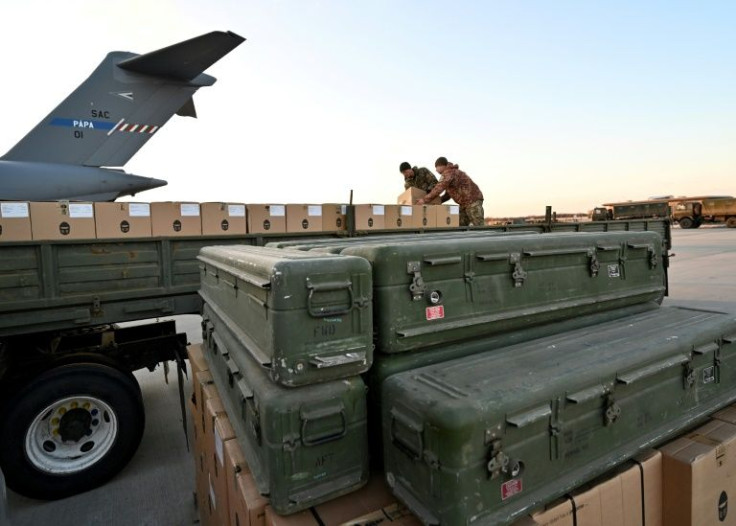As Ukraine War Drags On, US Running Low On Some High-End Weapons: Report
KEY POINTS
- It is facing shortage of 155mm artillery ammunition and Stinger anti-aircraft missiles
- The U.S. may not be able to maintain the supply of high-end ammunition to Ukraine indefinitely
- Russia is also facing a major shortage of weapons and delays in military production
As the war in Ukraine drags on, the U.S. is reportedly facing a shortage of some high-end arms and weapons systems.
The country is running low on its weapon stockpile of 155mm artillery ammunition and Stinger anti-aircraft shoulder-fired missiles as it struggles to meet the high demand, CNN reported, citing three officials with knowledge of the matter.
Concerns have also been raised about the pace of manufacturing of other military equipment, including HARMs anti-radiation missiles, GMLRS surface-to-surface missiles and the portable Javelin anti-tank missiles. The U.S. has moved to ramp up production for those and other systems, the CNN report said.
However, the shortage would not impact the readiness of the U.S. forces. The military equipment and weapons being sent to Ukraine do not come from what the U.S. keeps for its own contingencies, the officials told the outlet. A key reason for the concern is that the U.S. defense industry is facing difficulty keeping up with demand quickly enough.
Speaking at a press conference following the Ukrainian Defense Contact Group meeting Wednesday, Army General Mark A. Milley, chairman of Joint Chiefs of Staff, said: "All Ukraine is asking for is the means to fight, and we are determined to provide that means. Ukrainians will do this on their timeline, and until then, we will continue to support all the way for as long as it takes."
Despite Washington's assurance of supporting Kyiv for "as long as it takes," as the CNN report points out, the fact is the U.S. will not be able to maintain the supply of high-end ammunition to Ukraine indefinitely. Therefore, the challenge for the Defense Department is to determine if the country's own stockpile is "running low," a subjective call depending on the risk the Pentagon is willing to take, a senior defense official has said.
While emphasizing that the number of weapons "given to Ukraine are relatively small compared to U.S. inventories and production capabilities," Mark Cancian, a senior adviser at the Center for Strategic and International Studies (CSIS) wrote in a September article that the "key judgment for both munitions and weapons is how much risk the United States is willing to accept."
As Cancian points out, Washington needs to maintain munition stockpiles to support its own war plans in the face of contingencies that may arise — such as a war with China over Taiwan, North Korea or a conflict in the Middle East or Europe.
While it is not known how much the Ukraine war is costing American taxpayers, several Republicans are demanding a forensic audit of the U.S. military and non-military aid to Kyiv. The Biden administration, on Tuesday, requested Congress to approve another $38 billion in Ukraine aid, which would reportedly bring the total spending to more than $100 billion.
Meanwhile, Russia is also reportedly facing a major shortage of weapons and delays in military production, forcing the Kremlin to cut through the bureaucracy to produce enough weapons and supplies to feed its war efforts in Ukraine.
Moscow has also reportedly turned to Iran and North Korea to buy shells and rockets, while there are fears that the depleting military resources could force Putin to use Russia's tactical nuclear arsenal to achieve victory or at least freeze the conflict in Ukraine.

© Copyright IBTimes 2024. All rights reserved.






















